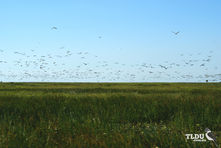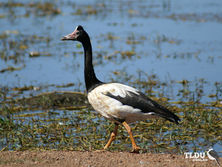
Shoppers Feedback:
Jan 17, 2017
Hello Ros,
I have now paid the invoice, but I would like to write to you just to say a big THANK YOU for getting me the Penguin!
The ChatterMate Penguin became a nice memory for me when I was in New Zealand, and I am so greatful to you for arranging so that I could have it! :-)
Thank you so much!!!!!!!!!!!
Regards,
Malin
Hi Ros,
Many thanks for your very kind email. I really appreciate your prompt reply!
I appreciate your advice regarding the decorations and customs. These are a gift for my daughter’s exchange student family so when she returns home on the weekend I will show her and see if she loves them as much as I do!
Thanks so very much again - I am truly grateful for your kind assistance.
Kind Regards
Bernadette
Ros,
Thanks again for the great customer service. It's a refreshing change!
Best regards,
Trevor
Hey Roz,
Thank you for your emails. Just loved my first order. The cute little Aussie bush critters are going to be used for an office Christmas decoration. My colleagues also liked them and talked about making an order to your site. I'll send you a photo when completed.
I'll be ordering more to send to my daughter's host family in America.
Fabulous service from you.
Kind regards,
Michelle
Thankyou. Order arrived today. One very happy grandson with his new beastly binoculars.
Regards,
Irene
- Home
- Wild Wonders
- Shop
- Aromas of Australia
- Australian Made
- Books
- Book Marks
- Christmas Decoration Sale
- Christmas Decorations
- Clocks
- Drink Holders
- Garden & Outdoor
- Gift Wrapping & Cards
- Home & Giftware
- Jewellery
- Keyrings
- New Products
- Pencils & Pen Holders
- Photo Frames
- Plush Toys
- Plush with Sound
- Sheepskin Rugs
- Stationery
- Stone Carvings
- Toys & Games
- Travel Goods
- Wedding
- Wild Figurines
- Wildlife Safety Products
- Wind Chimes
- Wine Charms
- View All Products
- Wildlife
- Australiana
- Explore
- Contact Us
Magpie Goose

Quick Facts
| Length: | 82 cm |
| Height: | - |
| Weight: | - |
| Colour: | Black neck and head, white underparts with black wing edging. Orange bill, legs and feet |
| Habitat: | Floodplains and wet grasslands |
| Food: | Aquatic vegetation |
| Predators: | - |
| Status: | Secure in NT, QLD & WA. Vulnerable in NSW. Not Present in TAS. Endangered in VIC |
The Magpie Goose has a black neck and head, with a characteristic knob on the crown (larger in males), which increases in size with age. The underparts are white, with contrasting black edges on the underwing. The bill, legs and feet are orange. The Magpie Goose differs from most waterfowl in having strongly clawed toes that are webbed only on their basal halves (i.e. only partly webbed). Females are slightly smaller than males.
The Magpie Goose is widespread throughout coastal northern and eastern Australia. It can be seen from Fitzroy River, Western Australia, through northern Australia to Rockhampton, Queensland, and has been extending its range into coastal New South Wales to the Clarence River and further south.
The Magpie Goose is seen in floodplains and wet grasslands. Some individuals, mostly younger birds, may be seen at quite long distances inland.
Large, noisy flocks of up to a few thousand birds congregate to feed on aquatic vegetation. The Magpie Goose is a specialized feeder with wild rice, Oryza, Paspalum, Panicum and spike-rush, Eleocharis, forming the bulk of its diet.
During the breeding season, Magpie Geese build nests in secluded places, usually close to wetlands. The nest is almost single-handedly constructed by the male. It usually consists of a simple unlined cup placed either in a floating platform of trampled reeds or built in tree-tops. Pairs of geese mate for life, but a male may have two females. Two females may occasionally use the same nest to lay the large, oval, off-white coloured eggs. All adults share incubation and care for the young.
Last Updated: Thursday 18th July, 2013
BirdLife Australia - www.birdlife.org.au
BUSH e-TELEGRAPH
Signup for our monthly newsletter the "e-Telegraph"
Quick Links
Home | The Beginning | About The Land Down Under | Wild Wonders | Advertise on Wild Wonders | Christmas Decoration Sale | Christmas Tree Decorations | Drink Holders | Plush with Sound | Stone Carvings | Wildlife Wine Charms | Freebies | Australian Wildlife | Help Our Wildlife | Australiana | Photo of the Month | Explore The Land Down Under | Contact Us | Legal Notices


